I tried playing songs such as 'Senbonzakura' with the effector 'MIKU STOMP' that makes Hatsune Miku sing when you play the guitar.

KORG , a manufacturer of electronic musical instruments such as synthesizers and equipment for DJ/VJ, will release the compact effector `` MIKU STOMP '' in late October, which allows you to play the guitar and make Hatsune Miku sing. This time, I was able to borrow one such MIKU STOMP, so I decided to check out what kind of performances it is capable of.
MIKU STOMP STOMP EFFECT | Effects | KORG
The main body of the compact effector 'MIKU STOMP' looks like this. It has the same shape as a general compact guitar effector, but it has only one knob and a large Miku design.

The size is also the same as a general effector.
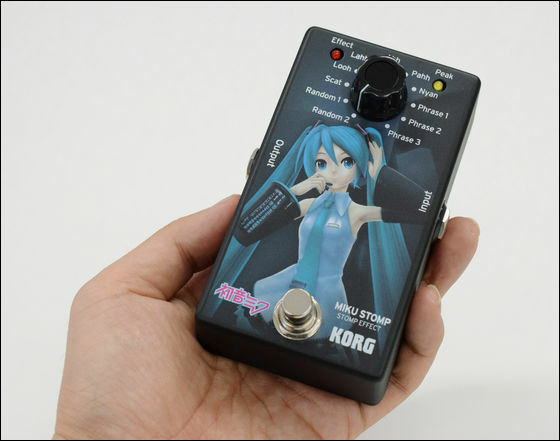
The jacks for connecting the guitar are also standard for compact effectors, with input on the right and output on the left. When you hear that ``Hatsune Miku sings on the guitar,'' you might think that some kind of special connection is required, but it's as simple as connecting with the cable you always use.
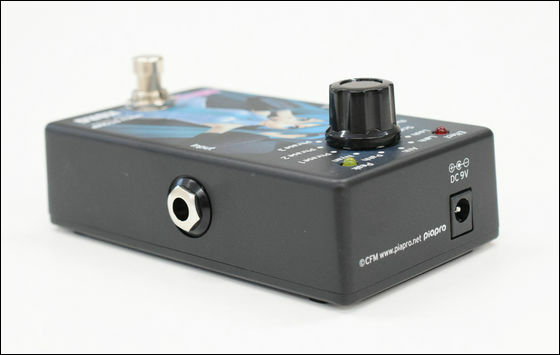
At the top of the main unit, there is a red LED that indicates effect operation and a yellow LED that indicates the guitar input level. Below that is a selector that lets you choose how Miku sings, and there are eight presets and three user banks. I wasn't able to review it this time, but in the product version that will be released in late October, you will be able to use an iOS app to input your own original lyrics into MIKU STOMP and have it sing.
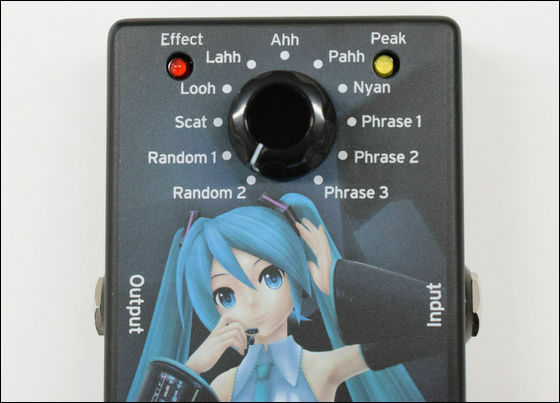
The preset voices are types that play single notes such as 'Nyan', 'Pahh', and 'Lahh', 'Scat' that randomly connects them, and 1000 voices built into the main unit. 'Random 1/Random 2' is available, in which words are randomly connected and pronounced.
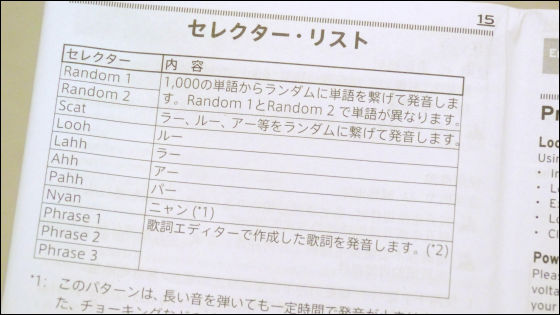
Effect switch at the bottom of the main unit. Normally, switches are often operated with your foot, but with this product you may feel reluctant to step on them...
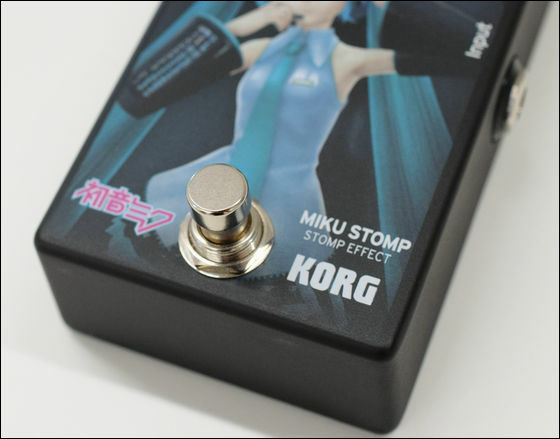
Now let's try it out. This time, we prepared a guitar equipped with
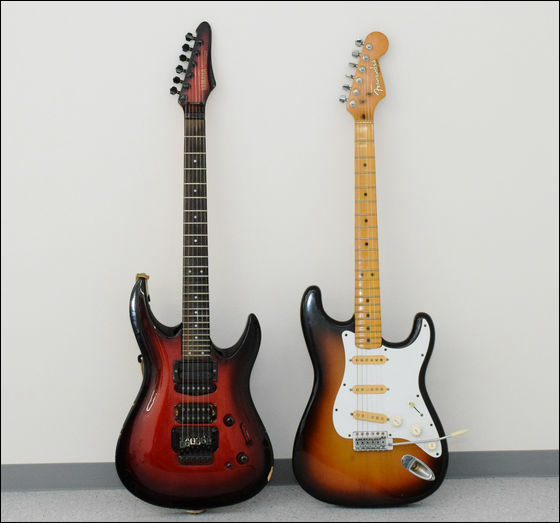
When connecting, the key is to connect it as directly as possible without putting anything between the guitar and the effector. MIKU STOMP processes the input guitar signal with a processor and plays Miku's voice based on the detected pitch, so the input should be as natural and unprocessed as possible. It seems like it will. This time, I tried connecting in the order of 'guitar' → 'MIKU STOMP' → 'sound interface' → 'monitor speaker' and listening to the raw sound.
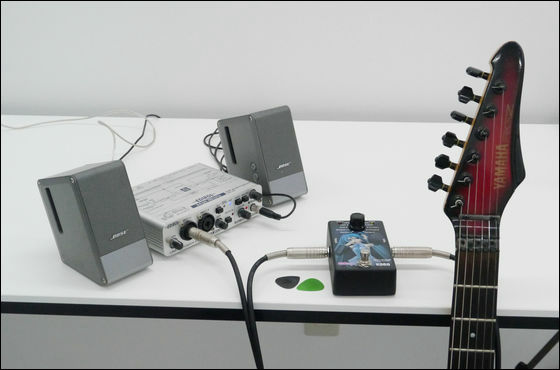
First of all, the following movie is where I tried playing Doremi using various voices. It takes some getting used to, but after playing for 30 minutes, I got the hang of it and was able to play almost exactly the way I wanted. Since the processing involves analyzing the guitar's analog signal and making the sound, there is a slight time lag from the actual performance, which can't be helped, but it's more refreshing to be able to hear Miku's voice with your own performance. I feel moved.
The types of voices preset on KORG “MIKU STOMP” are as follows
When playing, you need to be careful not to make unnecessary sounds by muting the strings that are not being played, picking carefully, and adjusting the volume of the guitar to ensure that the yellow The three points are to play just before the LED lights up. Please note that unlike guitar synths, it does not support playing chords. Although I didn't notice much of a difference depending on the type of guitar, I felt that tracking accuracy would be better if I used a front pickup and narrowed down the tone a little to make the sound more rounded.
And here is a performance that sings the lyrics that can be said to be the true essence of MIKU STOMP. I played the melody of 'Sakura Sakura' and one of Miku's signature songs, 'Senbonzakura'. Although it may not be the same as playing with special software , it can be said that it reproduces almost the same performance.
I tried singing “Sakura Sakura” and “Senbonzakura” with KORG “MIKU STOMP” on the guitar.
If you want to sing the lyrics, the stored letters will be uttered in sequence one by one each time you pick, so it is important not to make any unnecessary sounds. If you let your guard down and make an unnecessary sound, MIKU STOMP will faithfully sing the melody with one note off, but the song will be surprisingly meaningless, which might be a little interesting. In addition, on KORG's official page , you can listen to demo performances by otomania , so if you are interested in the product, you may want to check it out.
Unfortunately, we couldn't make it in time this time, but when the product version is released, a dedicated iPhone app will be released that will allow you to input the original lyrics into MIKU STOMP. The setting method seems to be to flow the input text data from the guitar's pickup, making it a quite interesting app. The user area supports up to 6000 characters in hiragana and katakana, so it will be possible to input the entire lyrics for one song.
MIKU STOMP is scheduled to be released in late October 2014.
© CFM
MIKU STOMP STOMP EFFECT | Effects | KORG
http://www.korg.com/jp/products/effects/mikustomp/
Related Posts:







